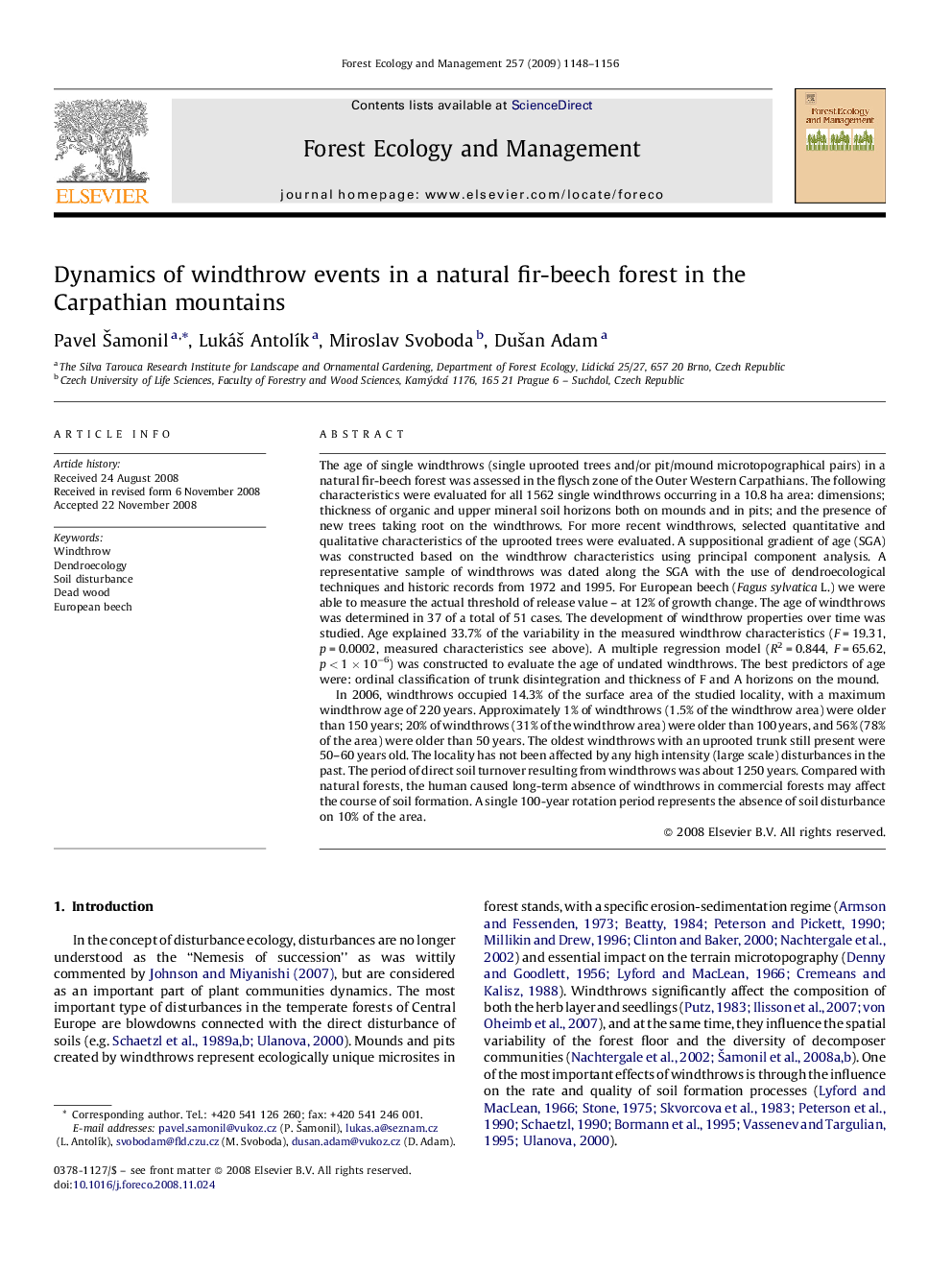| کد مقاله | کد نشریه | سال انتشار | مقاله انگلیسی | نسخه تمام متن |
|---|---|---|---|---|
| 89124 | 159332 | 2009 | 9 صفحه PDF | دانلود رایگان |

The age of single windthrows (single uprooted trees and/or pit/mound microtopographical pairs) in a natural fir-beech forest was assessed in the flysch zone of the Outer Western Carpathians. The following characteristics were evaluated for all 1562 single windthrows occurring in a 10.8 ha area: dimensions; thickness of organic and upper mineral soil horizons both on mounds and in pits; and the presence of new trees taking root on the windthrows. For more recent windthrows, selected quantitative and qualitative characteristics of the uprooted trees were evaluated. A suppositional gradient of age (SGA) was constructed based on the windthrow characteristics using principal component analysis. A representative sample of windthrows was dated along the SGA with the use of dendroecological techniques and historic records from 1972 and 1995. For European beech (Fagus sylvatica L.) we were able to measure the actual threshold of release value – at 12% of growth change. The age of windthrows was determined in 37 of a total of 51 cases. The development of windthrow properties over time was studied. Age explained 33.7% of the variability in the measured windthrow characteristics (F = 19.31, p = 0.0002, measured characteristics see above). A multiple regression model (R2 = 0.844, F = 65.62, p < 1 × 10−6) was constructed to evaluate the age of undated windthrows. The best predictors of age were: ordinal classification of trunk disintegration and thickness of F and A horizons on the mound.In 2006, windthrows occupied 14.3% of the surface area of the studied locality, with a maximum windthrow age of 220 years. Approximately 1% of windthrows (1.5% of the windthrow area) were older than 150 years; 20% of windthrows (31% of the windthrow area) were older than 100 years, and 56% (78% of the area) were older than 50 years. The oldest windthrows with an uprooted trunk still present were 50–60 years old. The locality has not been affected by any high intensity (large scale) disturbances in the past. The period of direct soil turnover resulting from windthrows was about 1250 years. Compared with natural forests, the human caused long-term absence of windthrows in commercial forests may affect the course of soil formation. A single 100-year rotation period represents the absence of soil disturbance on 10% of the area.
Journal: Forest Ecology and Management - Volume 257, Issue 3, 10 February 2009, Pages 1148–1156